Tools To Design Software Architecture
Best architecture software of 2021: Free and paid, for Windows, Mac, Linux, and online

The best architecture software provides a platform for digital designs and redesigns, for architectural projects such as buildings and models.
Architecture software has become essential in the modern digital world, making it easier to draw up, save, and print plans for your designs. Additionally, while there are various digital design packages out there, architects need something more dedicated than normal graphic design software.
This is where architecture software really comes into its own, allowing architects to not just design their vision simply and easily, but also edit, delete, and add at will. Additionally, for the more serious projects you can also include engineering information to ensure your structures are viable in a real-world context.
Architecture software can also be used to set up workflow management and account for project management tasks, some of which are included, integrated, or can simply be exported into another program.
However, dedicated software for architecture is still quite niche, as the programs have to be pretty comprehensive, and there are only a few vendors who specialize in this area.
Here then we'll look at the best architecture software on the market, and include some additional options worth considering.
- We've highlighted the best drawing and painting software.
- We've also featured the best laptops for engineering students.

1. AutoCAD
Yet more tools from Autodesk
Reasons to buy
+Comprehensive toolkit +Efficient keyboard shortcuts +Autodesk integration
Reasons to avoid
-Steep learning curve
AutoCAD has long been a staple of constructional engineers and architects, and Autodesk has built in specific building design and architecture toolkits into its staple AutoCAD software.
To speed up the process, it provides pre-built objects for walls, doors and Windows, and mechanisms for creating elevations, sections and plans from model geometry.
The only big caveat to this application is how firmly aligned to older working practices it is, where many in the building trade are moving towards a Building Information Modelling application (BIM) future. For those customers Autodesk offers Revit.

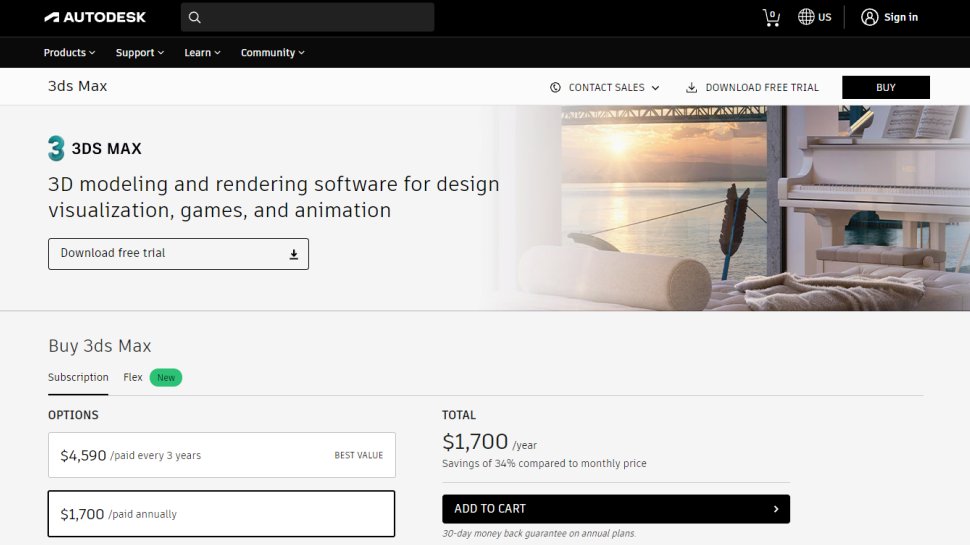
2. 3DS Max
A flexible modelling system with powerful plugins
Reasons to buy
+3D modelling and animation +AutoCAD file support +Powerful Plugins
Reasons to avoid
-A steep learning curve
3D Studio existed before Windows 3.x and was one of the first tools to offer hardware accelerated rendering of 3D images. Its value is in creating visuals and fly-through animations to promote a project, rather than design it from the floor up.
Along with the vanilla 3DS Max, you can choose three special flavors designed for Media work & Entertainment, Production design & manufacturing, and an Architecture, Engineering and Construction collection.
That last collection includes products we'll mention separately, including AutoCAD, Civil 3D, and Revit. Those are just the major applications, as it also has tools for structural analysis, steel detailing, building performance analysis and even vehicle path calculations.

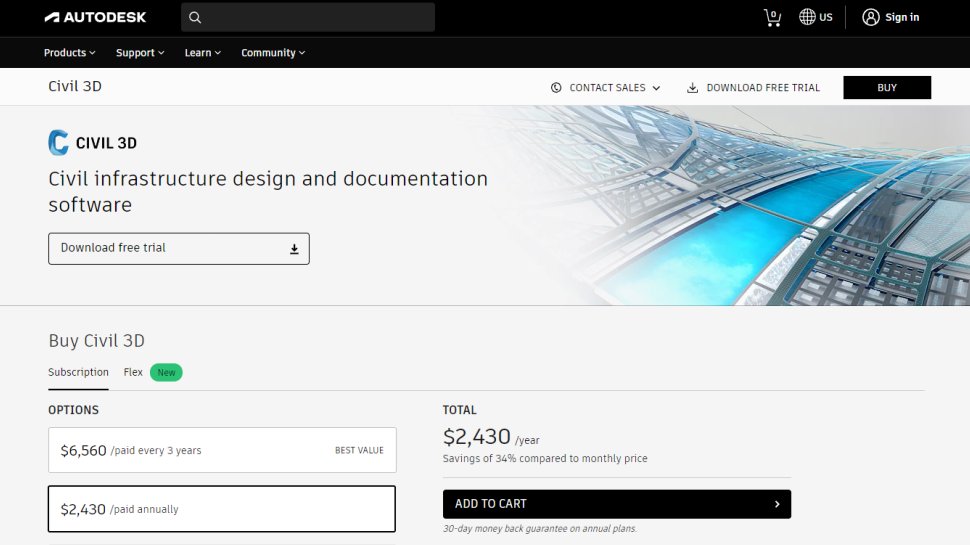
3. Civil 3D
AutoCAD with a civil engineering twist
Reasons to buy
+Command line interface +Versatile approach
Reasons to avoid
-Occasional stability issues -Cloud isn't well supported
Modelling and drawing are only two of the functions needed from CAD by architects and builders. There are many others, many of which are addressed by Civil 3D from Autodesk.
Designed to work with other Autodesk products, specifically AutoCAD, Revit and 3DS Max, it offers a design and documentation pipeline for Building Information Modelling (BIM) workflows.
One useful ability is the integration of survey images with terrain modelling, roads, service schematics and constructional geometry. All these elements are placed into a single highly annotated package. Allowing engineers to focus on their specific area, but also see how their changes might interfere with others.


4. CATIA
Can model buildings just as well as jets
Reasons to buy
+Huge model complexity +Very precise model data +Easy to learn
Reasons to avoid
-Very expensive
We first encountered CATIA over thirty years ago, when the creators Dassault Systèmes started to promote their in-house solution to other companies.
Originally conceived to precision model military hardware, it can easily handle complex architectural problems and generate finely detailed models.
Where many CAD systems added collaboration and security controlled distribution later, CATIA had this from its inception. And, more recently it expanded those coordination features to embrace Cloud functionality.
With such powerful and fully featured software Dassault don't post exact pricing. Instead, you have to ask for a quote. That hints at a high cost per seat, although the number of companies that use it also indicates that it is probably worth what they're demanding.

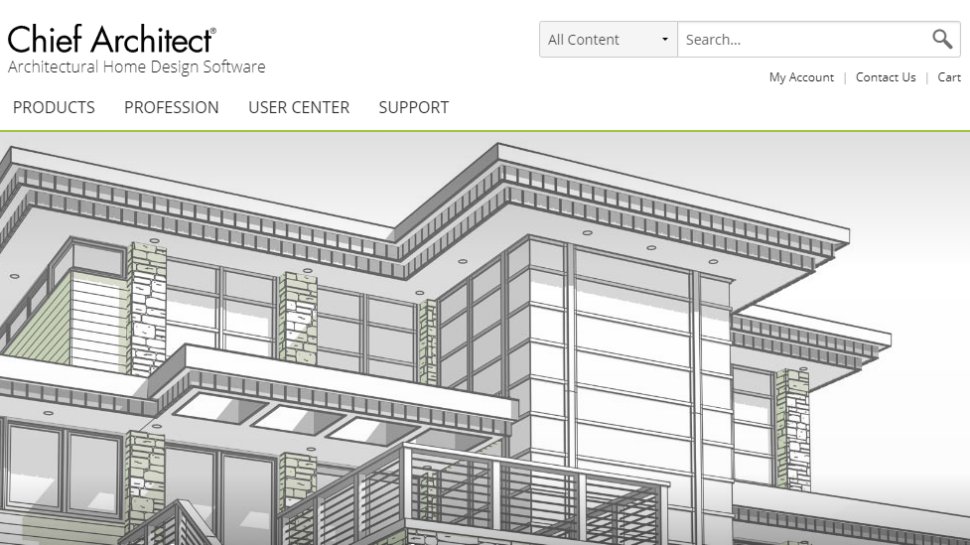
5. Chief Architect
A software house building kit
Reasons to buy
+Easy to use +Powerful smart features +On Windows PC and Mac
Reasons to avoid
-Expensive
Substantially more homes are built than giant office complexes or retail parks, and that is the forte of Chief Architect.
This tool can be utilised by homeowners wanting to remodel, home builders, interior designers and architects creating unique residences.
Depending on specific needs there is a product selection that begins very modestly and focuses, for example, on Interiors. Or, you can spend much more on their Premier product that handles complete buildings with all their details.
Using Premier or Architect Interiors you to rapidly construct 3D models of exterior and interior spaces and then project those into 2D plans and elevations.

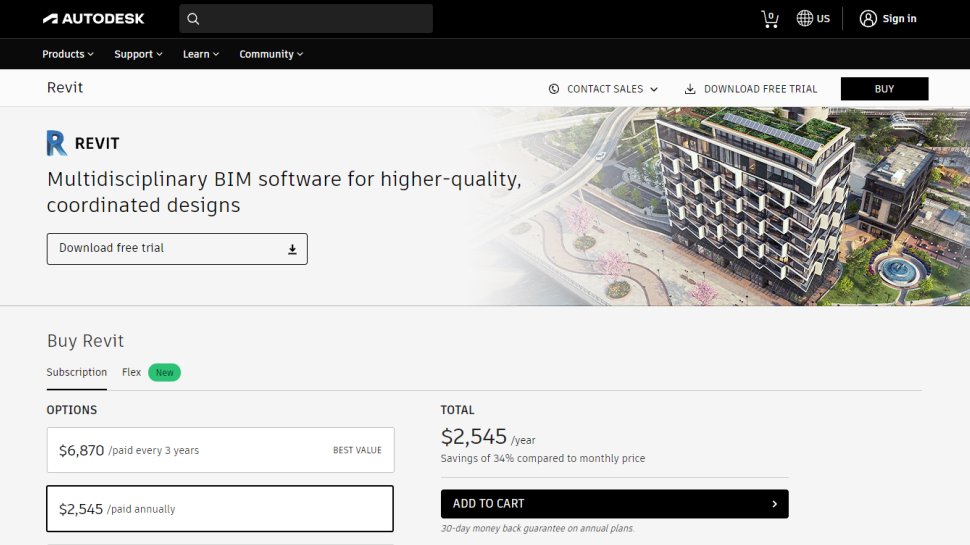
6. Revit
BIM-orientated design tool for architects
Reasons to buy
+Highly efficient tool +Smart object connectivity
Reasons to avoid
-Little overlap in AutoCAD commands
Part of a whole new generation of Autodesk products aimed specifically at architectural studios that handle complex projects and need BIM (Building Information Modelling), Revit not only enabled the design and modelling of a building, but the coordination of multiple engineers collaborating on the same scheme.
Designers using Revit are working with objects, not a vector between two points, and that allows them to work quickly and with confidence.
However, even if they both use a command line interface, this isn't like AutoCAD. And, those coming from that discipline might struggle initially with the transition. Once they've scaled the steep learning curve, Revit can offer a competitive edge over those that are just using traditional design applications.


7. Rhino
The king of curved surfaces
Reasons to buy
+Very powerful modeller +Plugins and scripting +Third-party services
Reasons to avoid
-BIM functionality is an add-on
Most CAD applications are great with straight lines and less marvellous with anything curved. Rhino was designed from inception to handle curved lines, meshes and NURBS surfaces of high complexity, like those in the features of a human face or the sweeping curves of a super-car.
For architectural design, Rhino can easily model the complex intersections of curved roofing or any part of the structure that isn't inherently straight. As a platform, it isn't a specialised tool. Instead, it caters for add-ins and the Grasshopper visual programming system to enable it to be tailored to specific tasks.
This makes Rhino a highly flexible tool that can be tweaked to automate complex modelling and detailing operations for those projects that need them. Unusually for CAD software, you are not forced to upgrade to the next release and upgrades generally cost half that of a new license.

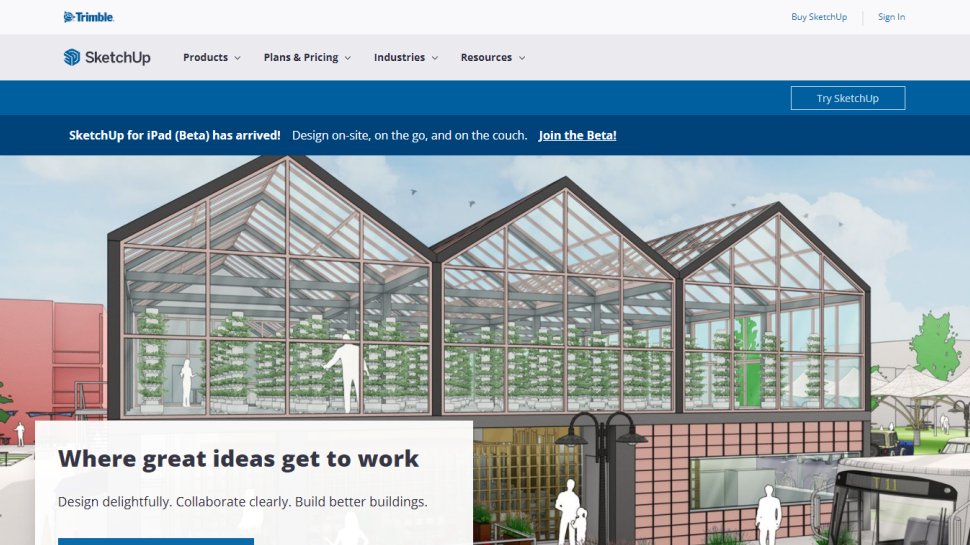
8. Sketchup
A user-friendly modelling tool
Reasons to buy
+Free version for home use +Very easy to learn
Reasons to avoid
-No built-in rendering -Not a collaborative tool
Originally a Google-backed project, Sketchup is now owned and developed by Trimble, who release a new version at least once a year.
As a start point for anyone entering 3D modelling, Sketchup is as easy as CAD gets. After a few easy to follow tutorials, designers should be able to work rapidly to construct complex solid geometry using it.
The free release has made Sketchup very popular, generating a large and active community of Sketchup users on hand to help the inexperienced. The user-base has also contributed to an extensive object library, a vast resource of pre-constructed parts to drop into any project.
It might not be suitable for designing a building entirely, but it is an excellent tool for rapidly prototyping a design when it is still at a conceptual stage.
Sketchup offers a free tier, although it has limited features.
Other architecture software options to consider
While we've featured some of the most powerful and popular AutoCAD and 3D design software programs in this roundup, especially for use in designing buildings and other architectural interests, there are plenty of alternative options to consider. Some of these are worth looking at because they better serve as an introduction for beginners, while others are notable for being free while retaining useful features.
TurboCAD Deluxe is a particularly good choice for beginners and intermediate users. It may not offer as many features as some of the other products on this page, but that's to be expected with its lower price tag. Even so, it may be a good piece of software to try in order to simply get used to basic functions, though be warned that there are no command line options here (which more advanced programs tends to offer).
FreeCAD is a free open source 3D modeler, which is especially good for reverse engineering models and seeing how changing parameters can affect the whole design. While it's not so feature-rich as the big paid-for programs, it is a well-supported platform and it does actually have some complex features to explore. Furthermore, it offers cross-platform support, so you can use it regardless of whether your PC is running Windows, macOS, or Linux.
SolidWorks is a powerful CAD program that manages to strike a balance between ease-of-use and advanced features. There's still a learning curve, though it's not overly steep, and some of the nice touches here include a wizard that looks for structural weaknesses in designs. However, it is a general 3D modeling tool rather than specific to architecture itself, so it might be better used for materials modeling rather than buildings. Even so, this product carries a lower price tag than many of the rivals we've featured here, so may be worth a look.
Tinkercad is another general 3D modeling tool that gets a mention because it's free to use and targeted at beginners. So if you lack confidence with tackling grand projects for the moment, Tinkercad could be something to get you used to some of the basics and features you might later develop more advanced training in. And because there's no charge to use it, the program won't burn a hole in your pocket – just treat it like a design sandbox to grow your skills.
CorelCAD is a dedicated CAD program from the ubiquitous Corel design team. It's a 2D drafting and 3D design platform that can be easier to use than some of the more complex products featured here. As you'd expect from Corel, though, this is a good all-rounder that aims to bring together a strong toolkit – not least in terms of the creation and manipulation of vector graphics – at a price that is less than half of the more expensive programs featured here. It also supports .stl files for 3D printing.
- We've featured the best AutoCAD to PDF converters and the best PDF to AutoCAD converter.
- Find the best 3D file converters.

Mark is an expert on displays, reviewing monitors and TVs. He also covers storage including SSDs, NAS drives and portable hard drives. He started writing in 1986 and had contributed to MicroMart, PC Format, 3D World among others.
Tools To Design Software Architecture
Source: https://www.techradar.com/best/best-architecture-software
Posted by: johnsonhiseek1938.blogspot.com

0 Response to "Tools To Design Software Architecture"
Post a Comment